A trip to Korea need not simply have to be all about Seoul! Well, you can certainly base yourself in Seoul but be sure to take some day trips to make the most out of your stay. Day trips are actually pretty easy to plan out with the wide array of resources and options available in terms of transportation and activities. This article sums up the top 13 day trips to take from Seoul, covering the types of activities you can partake in plus the ways of getting there!
1. Hwaseong Fortress
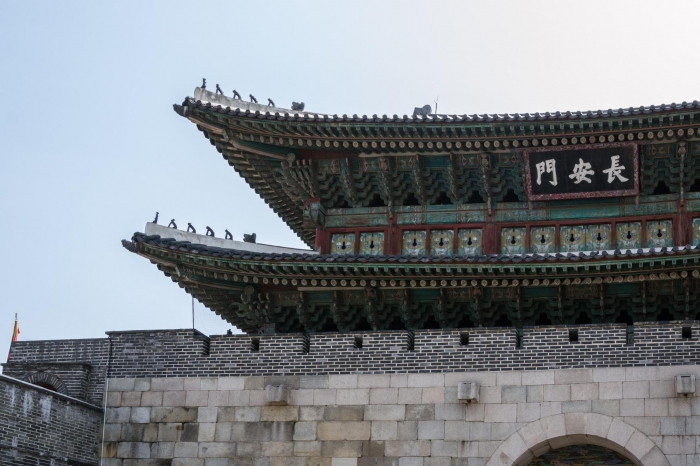
Image credit: dconvertini
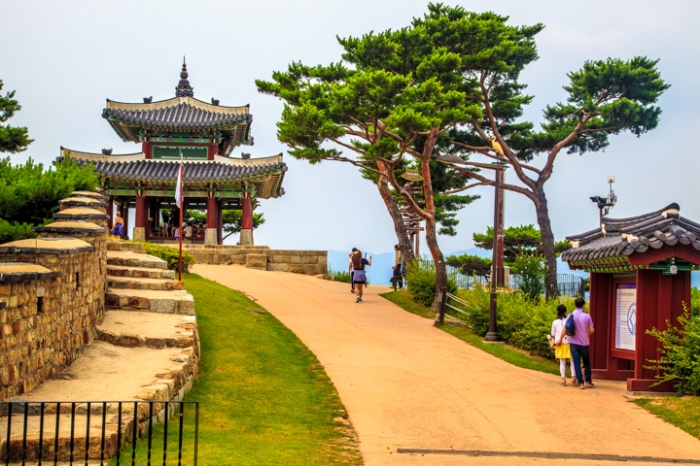
Image credit: Jeff White
Designated as a UNESCO World Cultural heritage Site in 1997, Hwaseong Fortress stretches for a total of 5.52km and comprises four gates facing each of the cardinal directions. Hike along the fortress wall for 1,000 KRW and you can get fantastic views of Suwon from the summit of Paldal mountain. The fortress walls consist of various intact defensive features such as floodgates, command posts, multiple arrow launches towers, secret gates and beacon towers.
Due to the inclusion of wooden components in the architecture of the fortress, the maintenance of the fortress walls requires specialised care. Fire and weeds could potentially threaten and damage the fortress walls and other features of Hwaseong.
At the centre of the fortress, there is a giant statue of the king Jeongjo, who is the 22nd ruler of the Joseon Kingdom. If you’re tired of walking, you can choose to take the Hwaseong Trolley (1,500 KRW for adults, 700 KRW for children), which is a 30-minute ride around the key points of the fortress. Also, for 2,000 KRW, you can try out traditional Korean archery at the end of your tour of the fortress.
Address: 910, Jeongjo-ro, Paldal-gu, Suwon-si, Gyeonggi-do
How to get there: Suwon station (line 1). Take buses 5 or 7 and get off at Jangan Park stop which is about a 10-15 minutes ride away. You’ll see Hwaseong on your right.
2. Muuido Island
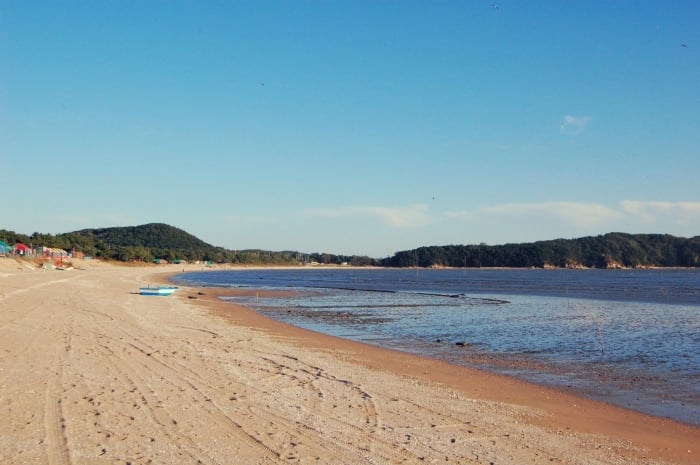
Image credit: Justin De La Ornellas
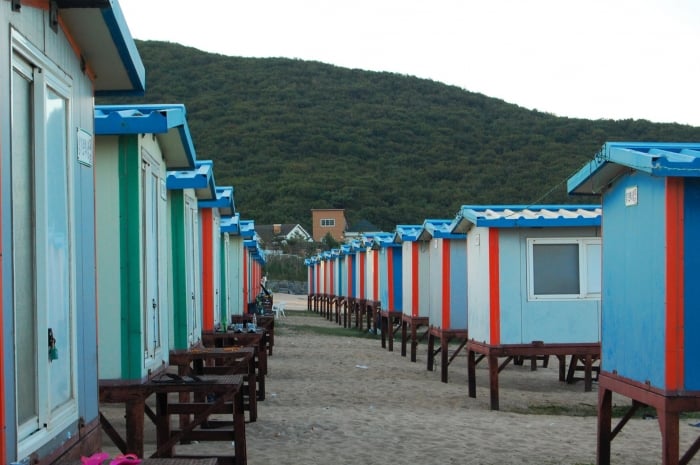
Image credit: Justin De La Ornellas
If you’re a big fan of the K-drama “Stairway to Heaven”, you will be thrilled to know that Muuido Island is actually one of the filming locations! With miniature minbak (beach huts) lining the shore, Hanagae Beach on Muuido Island is the main attraction of the area. You can conveniently leave your BBQ items and extra clothing on the minibak while enjoying the beach. The minbak can fit up to four people, so bring some friends!
Besides relaxing on the beach, you can try out beach zip lining, ATV riding or horseback riding. The beach is also great for night time BBQ and drinking, while enjoying some fresh seafood. Don’t worry if you are not prepared for the beach as there is a convenience store right around the corner that sells everything from hiking gear, fireworks, cup noodles and of course, booze.
Staying overnight at Muuido Island is another cool thing that you can do. The tide goes out pretty quickly allowing you to walk 200-300 metres into the ocean. It makes for a good place to observe various interesting seashells such as clams and hermit crabs. It would be best to bring a sleeping bag and extra food and snacks for your trip here!
Address: 310-11, Daemuui-ro, Jung-gu, Incheon
How to get there: From Incheon International Airport‘s Departure terminal (3rd floor), exit at gate 7 and board bus 222 (a T-money card will work for this bus). Bus 306 also takes you to the port, but it is a 10-minute walk from this bus stop to the ferry. The 222 route is a shuttle (back and forth), so it is simple to reach the Jamjinnaru ferry terminal. This car ferry runs every 15 to 30 minutes, from 7 a.m. to 8 p.m. (last ferry departure: 7:45 p.m.) and you will be able to see it shuttling between the two ports.
3. Ganghwado Island
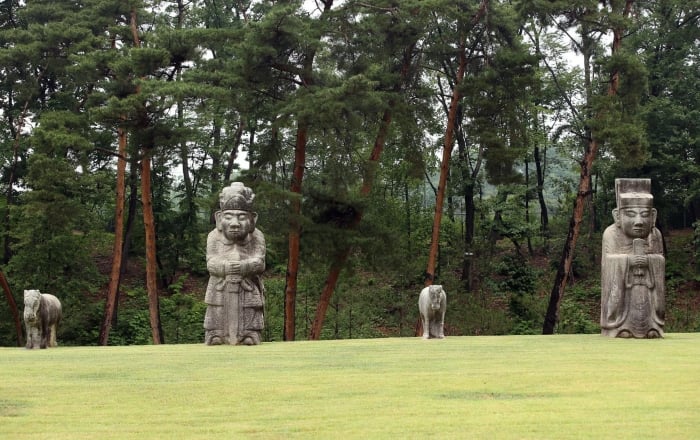
Image credit: Republic of Korea
As the 5th largest island in Korea, Ganghwado comprises 11 inhabited islands and 17 uninhabited islands. Ganghwado is actually a rural place filled with paddy fields, mountains and surrounded by pine forests, which makes this place the perfect getaway from the hustle and bustle of the city.
The famous Goindol Rocks are designated as World’s Cultural Treasure. There about 80 of the Goindol stone graves around the island; these are where the rulers of Ganghwa island, during the Bronze age, are buried in.
Located off the west side of Ganghwado on the island of Seokmodo, the Bomunsa Temple is a Buddhist temple with the famous cliff-side stone carved Buddha. To get to Seokmodo, simply catch the ferry that runs every 15 minutes to the island for 2,000 KRW (return). For another 2,000 KRW, you can enter Bomunsa, witness the carved Buddha and walk through the pine forests to the summit which has a viewing platform perfect to catch the beautiful sunset.
The Ganghwa Peace Observatory on the island overlooks the Han river and North Korea, making it the best place to witness the activities of North Koreans through telescopes available at the observatories. If you’re intrigued by the North Koreans after viewing them from afar, you might want to go for an official tour to the DMZ and the peace village at Panmunjom.
Ganghwado is also known for a number of fortresses such as the Gwangseongbo, Deokjinjin and Chojinjin as well as royal tombs such as the tomb of Queen Wondeok. Since Ganghwado is known for its ginseng, you can also purchase them along the way as there will be many locals selling them on the roadside.
Address: 394, Ganghwa-daero, Ganghwa-gun, Incheon
How to get there: Sinchon Station (Seoul Subway Line 2), Exit 1. Go forward for 5 minutes towards the GS25 convenience store. Take Bus 3000 to Ganghwa Intercity Bus Terminal. (Bus schedule: 05:40-23:20, 15-20min intervals).
4. Ansan Multicultural Food Street
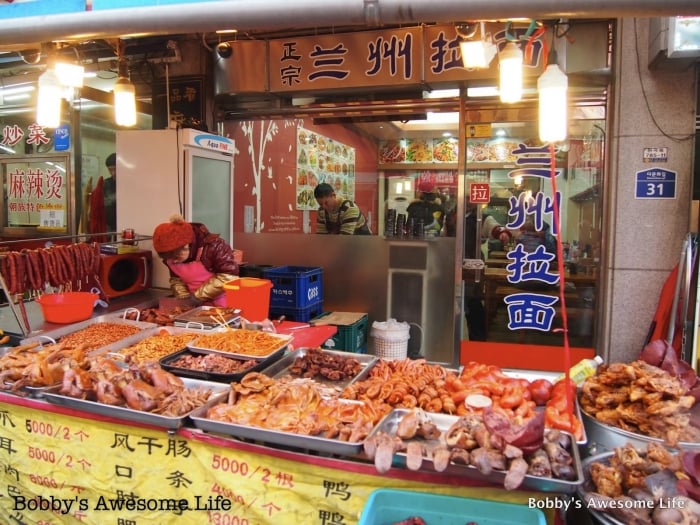
Image credit: Bobby’s Awesome Life
If you think that Korea is quite homogenous, a trip to Ansan Multicultural Food Street will definitely change your mind. From Vietnamese, Russian, Thai to Bengali and Chinese food, Ansan has pretty much every cuisine you can imagine. People who reside in “The Borderless Village” are largely migrants from 78 countries, who are mainly of Chinese or Korean descent. Other nationalities include Uzbeks, Vietnamese, Indonesians, Russians, Nepali and Sri Lankans. Sadly, these migrants are in Korea to do the ‘D’ jobs – dirty, dangerous and demeaning.
Besides a variety of street food available, there are also some restaurants that are worth a try. Serving up the most elaborate Indian and Nepali set meals in Korea, the Kantipur Restaurant offers the Kantipur special course meal that is great for 4-6 people. The Indian Style Thali set (9,000 KRW) is also great when paired with the lassi or Indian whisky. If you’re a meat lover, Samarkand Kafe serves up huge roasted chunks of unadulterated meat in their shashlik (3,000 KRW each), which comes with the choice of lamb, beef, liver or chicken. Quan Que Hu’o’ng is popular for their spring rolls and pho while Cafe Batavia Java serves affordable snack-sized meals at 4,000 KRW or less.
Address: Wongok-dong, Danwon-gu, Ansan
How to get there: Ansan Station (Exit 1)
5. Nami Island
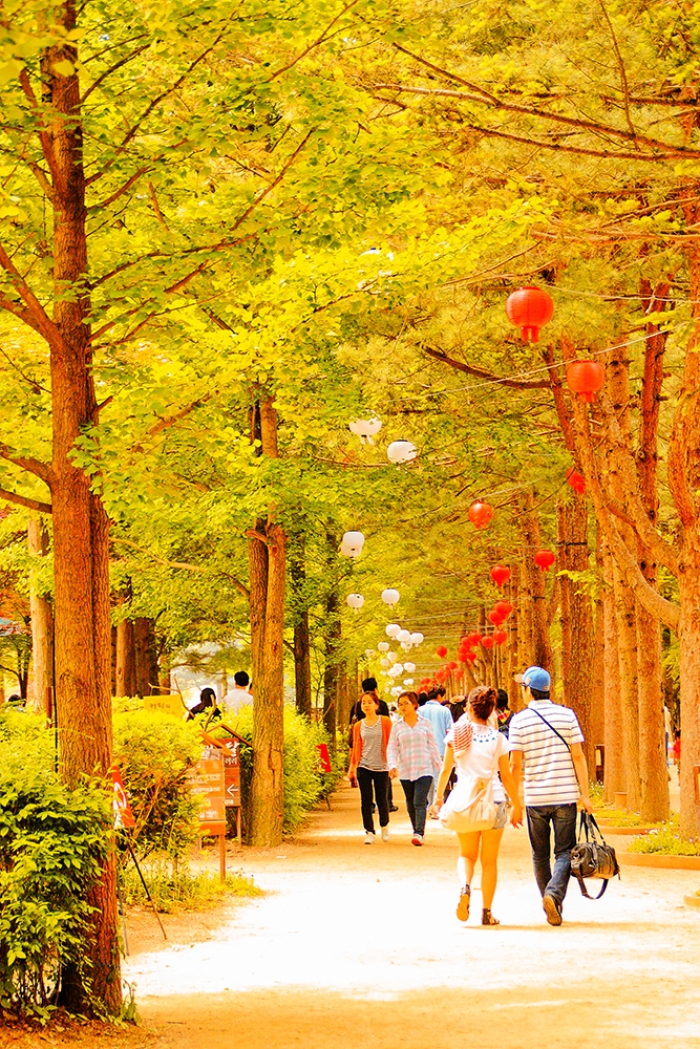
Image credit: Atibordee Kongprepan
An interesting characteristic of Nami Island is that there are no telephone poles in the area as all – electric wires are built underground to preserve the natural look of the landscape.
There are two ways to get to Nami Island from Gapyeong wharf, either by the ferry (8,000 KRW) that takes about 15 to 20 minutes or the zip-wire (38,8000 KRW), which is certainly a more adventurous choice. For 10,000 KRW, you can enter Nami Island to experience the handicraft studio, Nami Eco -School, Glass Workshop and Picture book playground that are great options for families who are visiting the island.
You can also cycle around the island to explore it; there are bicycle rental shops conveniently located in the middle of the island. Electric tri-way rental costs 10,000 KRW for 30 minutes while regular bike rentals costs 3,000 KRW for 30 minutes. Couples can choose to rent the couple bikes at 6,000 KRW for 30 mins to experience a more romantic exploration of the island. It roughly takes you less than 30 mins to cycle around the entire island so renting the bikes for 30 minutes would be sufficient.
The Tree Lanes such as the “Maple Land of True Love” and the “Gingko Tree Lane” are great spots for photographs. There is also a souvenir shop called the Namishop Sonata from which you can get souvenirs. Besides exploring the island, you can also visit Petite France, which is a small French culture village that showcases 16 French-style buildings. Several K-dramas such as the Beethoven Virus, Secret Garden and Running Man have chosen this French-styled area as their filming location. For 8,000 KRW (adults) and 5,000 KRW (children), you can view the Maestro’s office of drama Beethoven Virus, Guignoi (traditional French hand puppet show) and Marionette performances as well as screening animations.
Take a relaxing stroll around the Garden of Morning calm for 8,000 KRW (adults) and 5,000 KRW (children). This is Korea’s oldest private garden, showcasing a variety of flora and fauna in different seasons. In spring, enjoy the Spring Garden Festival when the plants are full bloom. Witness the array of roses, hydrangeas and roses of sharon during summer, and a garden of chrysanthemums and autumnal tints during Autumn. During winter, the biggest light festival in Korea consisting of 100 thousand pyeong illuminated by 30,000 lights takes place in the garden.
Address: 1, Namisum-gil, Namsan-myeon, Chuncheon-si, Gangwon-do
How to get there: Take the shuttle bus from Gapyeong Station.
6. Paju
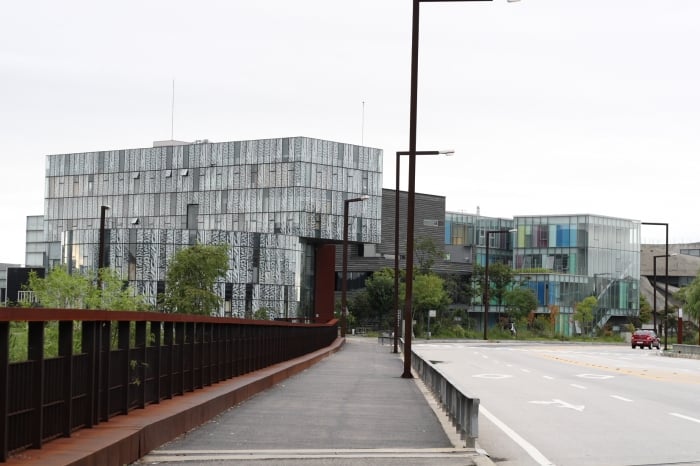
Image credit: hiroki toyosaki
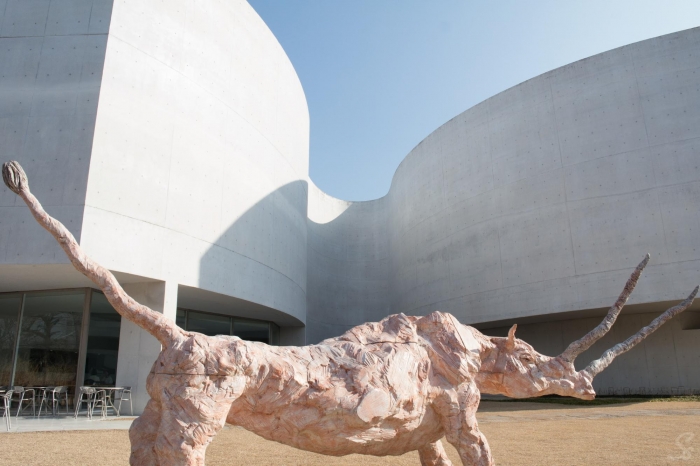
Image credit: Sung Soo
The main attraction of Paju is the Paju Book City, which is a cultural complex belonging to the Ministry of Culture, Sports and Tourism. Home to 250 publishers with over 10,000 workers, Paju Book City is the one stop place for the planning, printing and distribution of books. The Tan Tan Story House is a great place for children to develop an interest in books, with the various performances, galleries and book cafes such as the Darakwon and Moongongsa. The Oullim book cafe is a family-friendly cafe with around 50,000 children’s books from 34 publishing houses. There are also several second-hand bookstores such as the Bomulseom which stocks up a quality selection of Korean, English and Japanese books as well as magazines and music. Ega Bookstore is an interesting secondhand bookshop – all the books are on the ground, contained in a tent and sold for as cheap as 1,000 KRW. You can also visit the Pinocchio Museum (8,000 KRW), which showcases 1,300 pinocchio related pieces and various photo zones.
If you’re tired of books, visit the Provence Village, which started out as a chic French restaurant in 1996 and has since developed into a themed village consisting of the provence living gallery, herb village and European bakery and cafes. Admission is free and it is open all year round. The Soulone Botanical Gardens is great for a light walk along the tunnel of trees on the mountain road. Shop till you drop at the Paju Premium Outlets, which consists of three stories with 165 shops. Besides huge discounts from 25-65%, the Paju Premium Outlets stocks up everything from clothing to jewelry and housewares.
Address: 77, Saeori-ro, Tanhyeon-myeon, Paju-si, Gyeonggi-do
How to get there:
1. Provence Village: Hapjeong Station (Exit 8). Take Bus No. 2200 and get off at Seongdong Intersection bus stop.
2. Soulone Botanical Gardens: Hapjeong Station (Exit 2), take intercity bus 2200. Get off at Heyri gate 1.
3. Paju Premium Outlets: Hapjeong Station (Exit 2). Take Bus 2200.Get off at Paju Premium Outlets Back Gate Bus Stop. The outlet is located 600m from the bus stop. (Bus schedule: 05:30-22:10, 10min intervals/ Travel time: 1hr).
4. Pinocchio Museum and Paju Book City: Hapjeong Station (Exit 2). Take Bus No. 200 and get off at Paju Book City Bus Stop. (Bus interval: 30min / Estimated Travel Time: about 60 – 80min).
7. Jayu Park and Chinatown
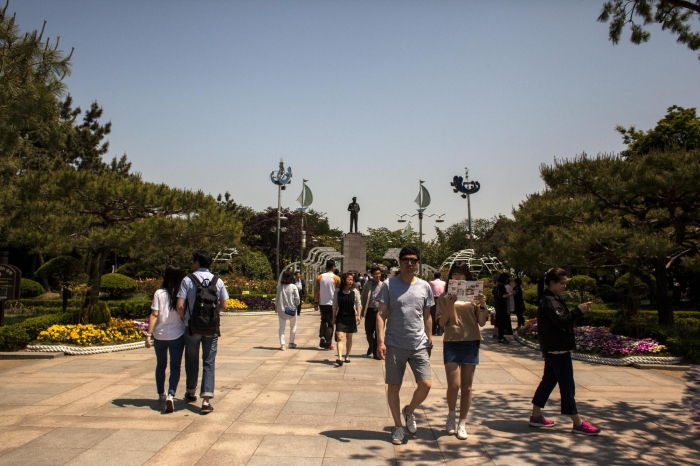
Image credit: Lig Ynnek
Offering spectacular views of downtown Incheon and its surrounding mountains, port and sea, Jayu Park is located in Mt Eungbongsan in Incheon Metropolitan City. As a historical site, the park comprises many large and small sculptures, with the most spectacular one being the General MacArthur statue that stands approximately 15m tall. The 100th-anniversary tower that commemorates the treaty of amity between Korea and the United States is also another sculpture that adds to the historic and educational allure of Incheon’s history. Built by a Japanese who was in need of meteorological information during the Russo-Japanese war in 1904, the Incheon Meteorological Observatory is the first modern meteorological observatory in Korea. The park is perfect for anyone with an interest in Korean-American relations.
After a visit to the park, you can head to Chinatown for some traditional Chinese cuisine. Residents of Chinatown are mostly 2nd and 3rd generation Chinese, who are descendents of the early Chinese settlers in the area. This explains the authenticity of the traditional Chinese cuisine and the Chinese Korean fusion dishes that are available at Chinatown. The Konggal Ppang (empty bread) is a delicious snack that is glazed with honey and has a light and airy texture. If you would like to try out the Onggibyeong Ppang, head to Hwadeok Mandu which specialises in the tasty dumplings that are cooked in an onggi. Priced at 1,500-2,000 KRW each, with three flavours to choose from – namely pumpkin, sweet potato or meat – it is certainly an affordable snack. With different kinds of dumplings such as king sized, boiled, steamed and home made, Wonbo fried dumplings is also worth a try. There are also several shops selling the well-known Jahangmyeon such as the Gonghwachun that is presumably the first restaurant ever to serve the delicious noodles. Yeong-Gyeong is one of the top three Chinese restaurants in Chinatown, which is known for their fried chicken with hot and sour soy sauce at (25,000 KRW). If you’re feeling thirsty, you can head to Lunarssi Kitchen for original Taiwanese bubble tea that has actually sold bubble tea way before Gongcha. With seven kinds of bubble tea, including black, coffee, green tea and blueberry tea, you are certainly spoiled for choice at Lunarssi.
Address: 25, Jayugongwonnam-ro, Jung-gu, Incheon
How to get there: Incheon Station
8. Yeongjondo
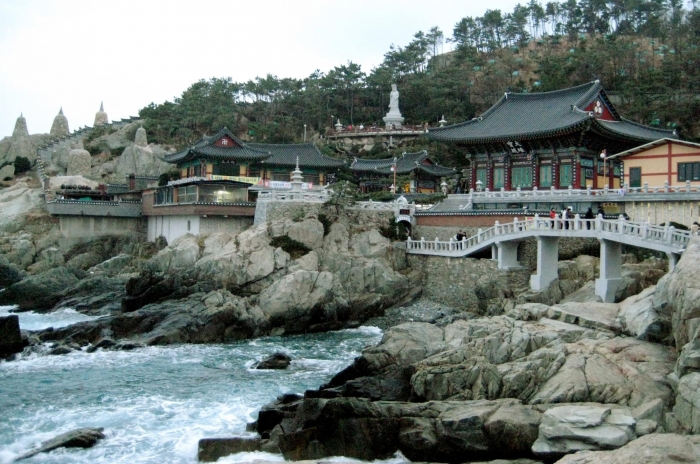
Image credit: maximillian_schaffhausen
The Yonggungsa Temple, located in the centre of the island on Mt Bakeunsan, is said to be the home of the Regent for 10 years. Right in front of the temple is the 1,300-year-old zelkova tree, which certainly adds to the ancient atmosphere of the place. Consisting of several buildings such as Gwaneumjeon, Yosachae and Chilseonggak, you can expect to witness the different areas of the temple which are serves different functions.
Besides taking a tour of the temple, you can also enjoy some exciting sports at the Yeongjong Sky Park and Mt Baekunsan Gliding Range. At the Yeongjong Sky Park, you can get a hands-on experience of flying planes even if you’re a total beginner to the activity.
The Eurwanhni beach has a high ecological value given that the mudflats there are the most important feeding ground for numerous shorebirds that visit Korea. You can also snap a great photo with the Incheon Bridge, Korea’s longest bridge, connecting Yeongjongdo and Songdo. To end off your day trip, take a relaxing bath at the bathhouse near the seashore that uses hot spring water.
Address: 100, Unnamseo-ro, Jung-gu, Incheon
How to get there: Incheon Station (Exit 1). From Incheon Station to Wolmido Island, take city bus No. 45, 23, or 2 and get off at the last stop, Wolmido Island. From Wolmido Island Port to Yeongjong Island: The ferry (10 minutes ride) runs on 30-minutes intervals. The first ferry is at 07:00 and the last ferry is at 21:30.
9. Seoul Grand Park
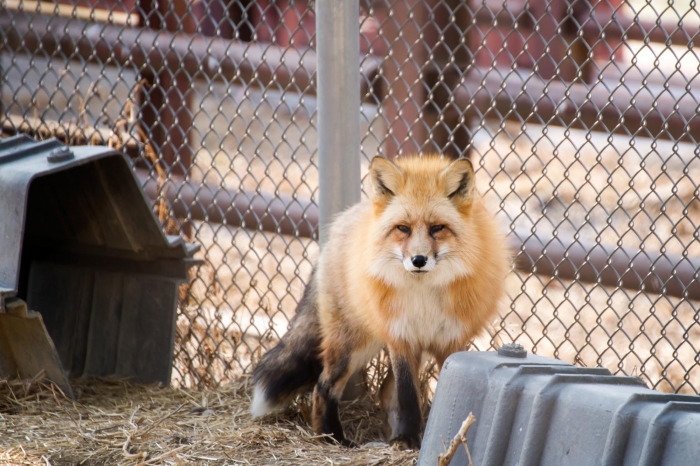
Image credit: #sung-min
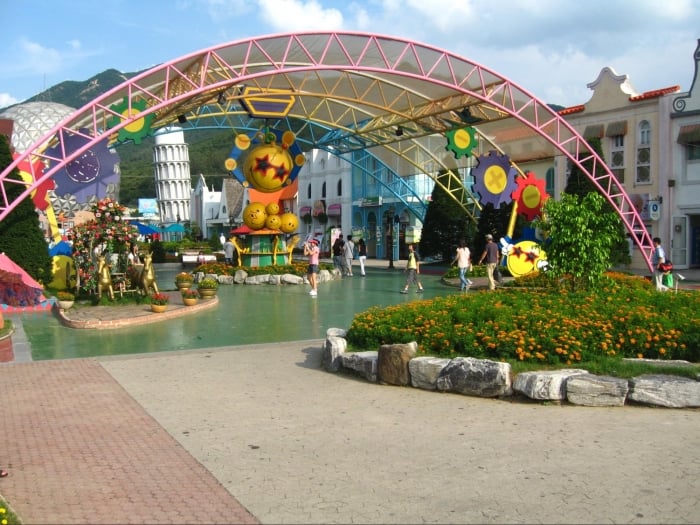
Image credit: Conor Jen Fan Club
Consisting of a few attractions, the Seoul Grand Park is perhaps the one stop place for adults and children to have a great time. The Seoul Grand Park Zoo is the 10th largest in the world and is home to almost 3,000 animals from a variety of 350 species that came from all over the world. You can do a 7.5km hike along the path through the natural surroundings of the zoo or take the skylift that passes through the Nature Immersion Area surrounding the zoo. With over 30,000 roses from over 200 species, the rose garden is the best place to visit in June when the flowers are in full bloom. The admission fee of the rose garden is 2,000 KRW for adults, 1,500 KRW for teens and 1,000 KRW for children.
For more nature-related activities, you can also visit the Botanical Gardens, which is the largest in Korea. It comprises tropical plants, a cactus garden, orchids and a greenhouse with over 250 kinds of plants native to Korea. Besides the Seoul Grand Park Zoo, the children’s zoo that is located right next to the Rose Garden lets the kids play with the lambs, goats and llamas in the wide open space. To end your day with more excitement, head to the amusement park that offers a wide variety of rides such as the black hole, magic carpet and king viking.
Address: 102, Daegongwongwangjang-ro, Gwacheon-si, Gyeonggi-do
How to get there: Seoul Grand Park Station (Exit 2)
10. Gangchon Rail Park
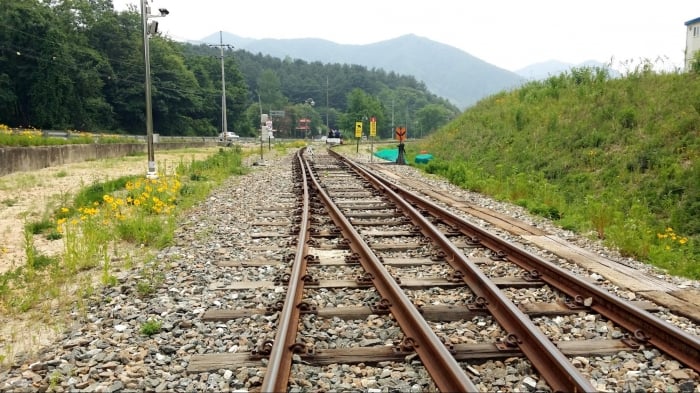
Image credit: Kobiz Media
If you would like to experience riding a rail bike on the old railroad along the Bukhangang River, the two courses offered at Gangchon Rail Park will certainly satisfy your desires. The 8.5km Gimyujeong Station Course takes around 1.5 hours while the 7.5km Gyeonggang Station Course takes about 1 hour 20 minutes. There are three sections to the course: the first section is a 50 minutes rail bike course, the second is the 15-20 minutes break and lastly it is the Romantic trail which takes 20 minutes. After the rail bike course, you will arrive at Gangchon station and head back to Gimyujeong station on the free shuttle bus that runs every 30 minutes. For 35,000 KRW, you can easily rent the four-seater rail bike and paddle along the nice scenery. There are two tunnels that you will enter and one of them is a disco tunnel where popular Korean hits will be played. Do not worry that the pedalling will be tough as they are adjustable and manageable for both kids and adults alike. It is best to reserve the tickets online as the waiting time can be up to three hours during peak season if you do not have a prior reservation. Also, try to be at the park 20 minutes before your scheduled slot to facilitate a faster registration process.
Address: 1385, Gimyujeong-ro, Sindong-myeon, Chuncheon-si, Gangwon-do
How to get there: Gimyujeong Station (Exit 1)
11. Art Valley
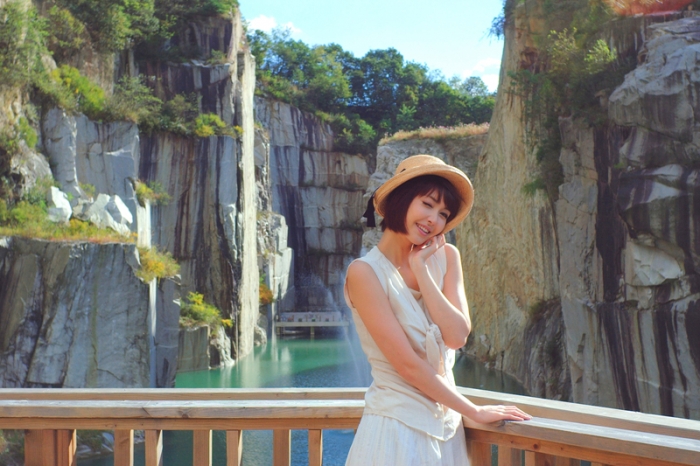
Image credit: Sang-Man Hyeon
Purchase a ticket at 5,000 KRW for adults or 1,500 KRW for children, and you will be taken up to the hill to the rock quarry by the monorail, which allows you view the spectacular quarry that is filled with spring and rainwater. The Pocheon Art Valley is established on the granite quarry and it has become the site of the nation’s first shared culture and art complex in 2009.
Officially opened on 1 Aug 2014, the Pocheon Art Valley Astronomical Science Museum showcases the cutting edge 4D video room and an astronomical observation room that offers the wide range of constellation reading. After touring the attractions, you can head to a uniquely designed cafe made of empty makgeolli bottles.
Address: 234, Artvalley-ro, Sinbuk-myeon, Pocheon-si, Gyeonggi-do
How to get there: From Pocheon Bus Terminal, take Bus No. 67 or 67-1 to Pocheon Art Valley Bus Stop.
12. Mangwolsa Mountain Temple
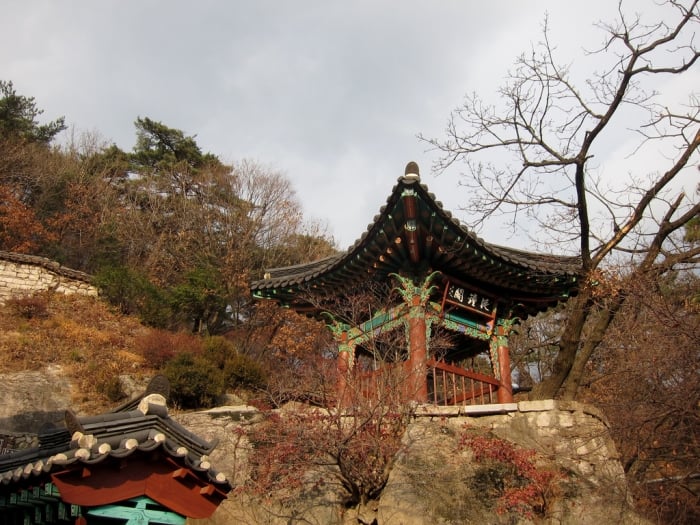
Image credit: Sean Munson
The oldest temple in Namhansanseong Fortress, the Mangwolsa Mountain Temple is situated within Bukhansan National Park. After the train ride to Mangwolsa Station and a one-hour hike, you will reach the entrance of the temple that has the longest history of the 10 temples in the fortress. Although the original temple was destroyed during the Japanese invasion and the Korean war, the current temple still has a historic allure thanks to the skilful restoration. The temple was once used by monks soldiers and military volunteers but currently, it has transformed to become a temple for bhikkhunis, which are fully ordained Buddhist nuns. The 13-storey pagoda, where the Buddha sarira is enshrined in, is the symbol of Mangwolsa and is given by India’s First Prime Minister Indira Ghandi to Seongbeop Sunim, the person who rebuilt the temple.
Address: Dobong-dong, Dobong-gu, Seoul. Jangheung-myeon, Yangju-si & Uijeongbu-si, Gyeonggi-do
How to get there: Dobongsan Mountain Station (Exit 1)
13. Yongin
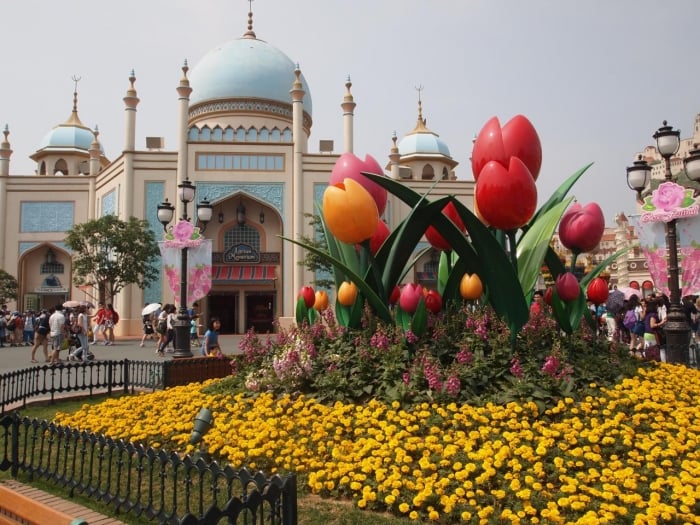
Image credit: Walter Lim
The main attractions of Yongin are Everland, Korean Folk Village and the Daejanggeum Park. Everland started out as a farmland in 1976 and has since become one of the most visited theme parks in the world, trailing just behind Lotte World. The theme park comprises several sections such as the American Adventure, Magic land and European Adventure ad Zootopia. The European Adventure is perhaps the most exciting out of them all as Everland’s world-class roller coaster T express is in the area. The T express is the second tallest and tenth fastest wooden roller coasters in the world. You can also enjoy a “live” concert of G-Dragon at the Hologram theatre, which simulates the actual performance.
The 240-acres Korean Folk Village allows visitors to experience an authentic showcase of 260 replica traditional houses of the different social class from various regions. There are also various traditional performances such as the nongak (farmer’s music), martial art on horseback and traditional wedding ceremony. Held in May, the ‘Welcome to Joseon’ show is one of the most popular shows, taking you back to the olden days during the Joseon dynasty. At 15,000 KRW for adults, 12,000 KRW for teens and 10,000 KRW for children, you can enter the folk village and partake in the variety of programs that incorporate various aspects of the Joseon culture, ranging from folk games to handicraft workshops. To give visitors a better feel of the traditional lifestyle, the townsfolk staff are actually dressed in period clothing and accompanied by farm animals.
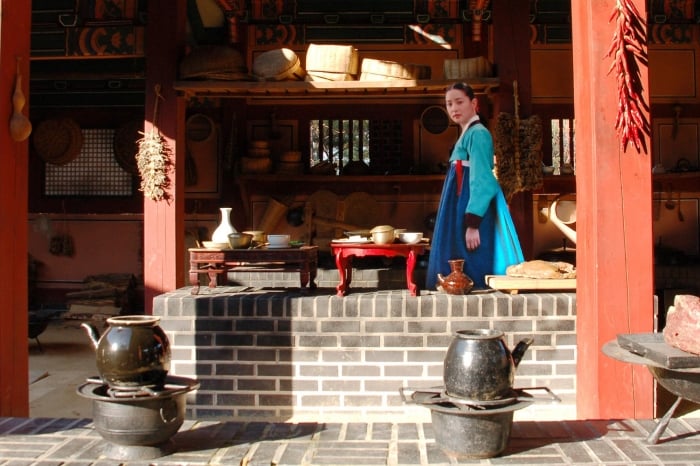
Image credit: m-louis
If you’re a big fan of K-dramas and would love to be “on set”, you definitely have to check out Daejanggeum Park which is a large film set used by MBC to film historical dramas. The park became very popular after the drama Dae Jang Geum, which explains the name for the park. The set may seem to most people as fake and inauthentic, but in actuality, the park has been recreated based on historical records, which enables for an accurate representation of the structures and cultures of the historic times. You can even choose to put on a hanbok and pose for photos at the special photo zones. Expect to see the traditional marketplace, yeolseongak pavilion and military drill hall which are popular sets for the various historical dramas. It takes about two hours to complete the whole park, so do try to allocate more time for this. Admission fees are as follows: 7,000 KRW for adults, 6,000 KRW for teens and 5,000 KRW for children.
Address: 199, Everland-ro, Pogok–eup, Cheoin-gu, Yongin-si, Gyeonggi-do
How to get there:
1. Everland: Jeondae-Everland Station (Exit 3)
2. Korean Folk Village: Suwon Station (Exit 5). Take Bus No.10-5 or 37 to Korean Folk Village or Nagok Village.
3. Daejanggeum Park: From Yongin Bus Terminal, take Bus No. 10 to Baekam. Transfer to Bus No. 105 and get off at MBC Set Bus Stop.





